NAB 2017
Yesterday marked the end of NAB 2017, the annual convention of the National Association of Broadcasters. NAB isn’t really a consumer-oriented event, but we like to go because it gives us some insight into trends and technology that will trickle down to prosumer and consumer products within a few years, as well as new products designed for these users.
With over 100,000 people in attendance, and almost 2,000 companies exhibiting, it’s a safe bet that we can’t share everything from NAB with you. (And really, do you want to hear about things like the latest advances in rack-mount news van hardware?) That said, let’s take a look at some of the things that did catch our eye at NAB 2017.
Atomos rocks the house
An afternoon trip to the Atomos booth is like the NAB equivalent of trying to get into a U2 concert. Things got so crazy in recent years (thanks in part to daily equipment giveaways), that for 2017 Atomos built a booth where CEO Jeromy Young could hold court and do live demos for the masses from an elevated perch. I almost expected him to start singing ‘Don’t cry for me, Argentina’ as he leaned over the balcony.
But the masses had good reason to be excited, because Atomos showed off a couple very cool products…
Atomos Ninja Inferno
Although it was announced about a month ago, this was the first chance many people had to get their hands on the new Ninja Inferno off-camera monitor and recorder. The Ninja Inferno is basically a non-SDI version of the company’s flagship Shogun Inferno, and Atomos is specifically targeting Panasonic GH5 users with support for 4K/60p recording via HDMI-out. For $ 995 it seems like a pretty compelling package, and apparently the masses agreed.
We have a Ninja Inferno we’ve been testing with the GH5, so we’ll be bringing you an in-depth look at this combination in the near future.
Atomos Sumo
While Shoguns and Ninjas drew people into the Atomos booth, what really got their attention was the new Sumo. Imagine an oversized, 19″ Shogun recorder and you’ll have a pretty good mental image of what it is. It can record 4K 12-bit Raw, 10-bit ProRes/NNxHR.
But the Sumo isn’t just for on-set monitoring and recording. It’s also designed to be an HDR color grading monitor, either in the field or in your edit suite. With a brightness of 1200 nits and a claimed 10+ stops of dynamic range, the Sumo can accept Log, PQ, or HLG signals from your editing software and display color accurate HDR footage with 10-bit quality.
This thing is a beast. If you want a sense of scale, look at the lower right hand corner of the picture above. See that little thing next to it? That’s a 7″ Shogun recorder. And with a price tag of $ 2,495, it’s surprisingly affordable. I want one of these things!
Blackmagic URSA Mini Pro
Blackmagicdesign is another company on fire with useful products for emerging filmmakers and even consumers. At NAB the company showed off its recently released URSA Mini Pro 4.6K camera. It offers a user-swappable lens mount, with support for EF, PL, and B4 mounts, and the company promises a Nikon mount later this year. Its Super 35 sensor captures 15 stops of dynamic range, and the camera includes built-in ND filters for optimal exposure.
the URSA Mini Pro feels like a very solid piece of equipment, and with a price tag of $ 5,995 it offers a lot of bang for the buck.
DaVinci Resolve: More features, lower price
Blackmagic also announced upgrades to its industry standard DaVinci Resolve software.
Branded as DaVinci Resolve 14, the new version promises to revolutionize the Resolve experience. In addition to a fully integrated NLE and industry leading color grading tools, Resolve 14 now includes pro-level audio tools, the result of a 2016 acquisition of Fairlight, a manufacturer of audio hardware and software for motion picture production. The addition of Fairlight audio tools means that users have access to professional editing, color correction, and audio tools in a single piece of software. Blackmagic claims that Resolve 14 also improves playback performance by a factor of 10.
What’s possibly just as interesting as the new features is the new price. While the basic version of Resolve will remain free, the full DaVinci Resolve Studio 14 will cost $ 299, a significant decrease from the previous price of $ 995. This is a shot across the bow of Premiere Pro and Final Cut Pro X, and should attract a lot more new users to the system. A beta of Resolve 14 is available now.
Blackmagic Mini and Micro Panels
One of the important features of the DaVinci Resolve experience has been integration with the DaVinci Resolve Advanced Panel, a $ 30,000 piece of hardware used by professional colorists, but out of reach to users with smaller budgets.
A few weeks ago, Blackmagic introduced two smaller panels, the Resolve Mini Panel ($ 2,995) and the Resolve Micro panel ($ 995). These smaller panels would be useful for a pro to use in the field, or in a smaller home studio, however they also represent a very affordable way for smaller production companies, or even enthusiasts, to access pro-level editing equipment at an affordable cost. I found both panels to be very easy to use: the trackballs and dials are very smooth and well-weighted, and the panels actually feel a lot more solid than they appear in pictures (at least to me). I think this is a great addition to the Resolve family of products, and I hope to do an extended test at some point.
Blackmagic Web Presenter
I know, I’ve covered a lot of Blackmagic products already, but I’m going to throw in one more. The Blackmagic Web Presenter is a box that does one basic thing, but does it really well. It takes output from any camera via HDMI or SDI, and converts the signal to a high quality 720p stream that gets sent to a computer through USB so that it appears as a standard webcam.
What that means is that you an use virtually any camera as a high quality webcam for applications like Skype, YouTube Live, or anything else that uses a webcam as a video source. So, if you’re tired of using your cheap built-in camera or mobile phone for your guest appearances on CNN, plug your GH5, 5D IV, or E-M1 II into the Web Presenter and Anderson Cooper will have no idea you’re coming to him live from your living room.
DJI meets Hasselblad: 100MP aerial photos ensue
Remember that time when DJI took an ownership stake in Hasselblad? Remember how we all joked that DJI would put a medium format camera on a drone? We all got some good laughs out of that, didn’t we?
Well, they went and did it, pairing a DJI M600 Pro hexacopter and a Hasselblad H6D-100c 100MP camera mounted on a Ronin-MX gimbal. Pricing hasn’t been announced, but the good news is that you can get the M600 Pro for only $ 5,000. Of course, you’ll still need a $ 30,000 H6D-100c to complete the package. (Though I hear free shipping is common…)
Curiously, there were a couple Hasselblad X1Ds sitting next to the drone as well, a camera whose size and weight might be more amenable to flight. I asked a Hasselblad representative if there were plans to release a similar combination using the X1D instead, but he wouldn’t confirm if that were the case. Of course, he didn’t deny it either.
Virtual Reality
Virtual reality, or VR, has been trying to get traction in the market for several years. Although it has gained some success in the gaming community, adoption of VR technology for photos and video has been slower. However, that certainly isn’t keeping people from trying to find the magic formula, and there’s a lot of investment from companies trying to do just that. Let’s take a look at a few VR products that grabbed our attention.
New Ricoh Theta
By now, everyone has probably heard of the Ricoh Theta. In fact, it’s one of the few VR cameras that has seen fairly wide adoption, thanks to its compact size and ease of use. However, the current Theta S still suffers from relatively low 1080p video quality and a lack of spatial audio.
The new Theta prototype on display at NAB addresses both of those issues, with 4K capture, four microphones, and also live 4K streaming capability. What really stands out to me here is the directional audio. Even at 4K, your VR viewing experience is still somewhat limited by the relatively low resolution of most viewing hardware, however in a demo the spatial audio was immediately noticeable. Instead of guessing where sound is coming from and trying to correlate it with what’s in front of your eyes, directional sound allows you to tell where the sound is coming from, providing a more immersive experience. No word on when the next Theta will be released.
Ricoh Theta R Development Kit
We first saw the Ricoh Theta R development kit at CES, but it was on full working display at NAB. The Ricoh R is based on the same overall design as the Theta, but has a very different purpose: it’s designed to provide 24-hour 360º live streaming. As such, there are a few differences in the product.
The most obvious one is a ribbed surface on the camera, which we’re guessing is to assist with heat dissipation. Also, unlike the upcoming version of the Theta, the Ricoh R still uses 1080p resolution, which should reduce data usage while streaming 24/7. Additionally, all image stitching is done in-camera, which makes it easy to feed out VR video for streaming. There’s no internal battery either, which probably makes sense for a device designed to run 24 hours a day.
What will the Ricoh R be used for? Well, pretty much anything you want, ranging from a security camera to placing it in the middle of a falcon’s nest. Ricoh wants you to develop unique applications. It will be available in June, and you can pre-order it now for $ 499.
YI Halo VR camera
YI Technology arrived in town with the new YI Halo, a VR camera built around Google’s Jump platform. The Halo utilizes 17 synchronized 4K YI cameras to record 8K stereoscopic video. At first glance, it appears that the cameras in the Halo are just standard YI 4K action cameras, but that’s not the case. While similar in size and shape, YI has actually made special cameras optimized for easy swapping and improved heat management.
After watching some sample videos from the Halo I have to admit I was pretty impressed. It’s some of the better VR footage I’ve seen. What particularly stood out were outdoor scenes with bright clouds. Clouds tend to be blown out on most VR cameras due to limited dynamic range, but on the Halo footage you could still see quite a bit of detail without darker areas on the ground being crushed to black.
The Halo is expected to be available this summer for a cool price of $ 17,000.
Insta360 Pro
The new Insta360 Pro is an impressive VR camera that captures 8K video, or 6K stereoscopic video, in a small, spherical package. It emphasizes the ability to get very high quality footage straight out of camera that can be streamed or posted online quickly, for example by a reporter in the field. In addition to six fish eye lenses, the Insta360 Pro includes four integrated microphones for spatial audio, but also supports external audio and power for extended use. All stitching is done in-camera, making it easy to stream out content live during an event.
Video quality was surprisingly good, though I still noticed obvious stitching artifacts in places. Also, whenever I looked at the camera, I couldn’t get over the feeling that it was smiling and staring back at me. Kind of like an evil clown. But if you can get past that, it’s possible to order one now for $ 3,500, with units expected to ship in mid-May.
The VR camera we all want
Of course, if you really want to do VR right, you build a spherical rig for 10 Arri Alexas. It’s the perfect solution if you have ten Alexas sitting around.
Just sayin’.
Sony still makes video tapes
Yes, Sony still makes video tapes. And yes, there’s still a market for them.
Fujinon MK50-135mm T2.9 cine lens
In the past year we’ve seen a lot of new cine lenses aimed at emerging filmmakers who want the quality of cine lenses without spending $ 20,000 and up for the privilege. In fact, just a couple months ago, Fujifilm announced its new MK series of cine lenses aimed at this market. We tested the first of these, the Fujinon MK18-55mm T2.9, and found it too be an outstanding lens, both in terms of image quality and build.
At NAB, Fujifilm displayed the second lens in the series, the MK 50-135mm T2.9 lens. It shares the same weight and dimensions as the 18-55mm lens, as well as its parfocal design and E-mount for use on Sony cameras. The lens is expected to be available in July, and while pricing has not been announced, we expect it to be in the same ballpark as the 18-55mm model, or around $ 3,799.
Fujifilm MK lenses in X-mount
When Fujifilm announced the MK series of Fujinon lenses, there was initially some confusion about the fact that Fujifilm was releasing them for Sony E-mount. This actually made a lot of sense, considering how many Sony Super 35 cameras are in use professionally. However, the company made clear it would eventually release the MK lenses in Fujifilm’s own X-mount as well.
At NAB, we got our first look at one of these X-mount lenses, the MK18-55mm T2.9, attached to a Fujifilm X-T2 body. Pricing and release date remain unannounced, but earlier this year Fujifilm told us the X-mount versions would be available ‘near the end’ of 2017.
Zeiss CP.2 Primes get artsy
Zeiss says that its Compact Prime CP.2 series of lenses are the most popular cine lenses it has ever produced. To commemorate this success, the company was busy creating a series of ‘art’ lenses (pardon me if that sounds a bit familiar…) by artist Joseph Ari Aloi. In fact, Aloi was in the Zeiss booth painting lenses in all shapes, colors and patterns.
C’mon. You know you want it.
Sigma Cine lenses
Not to be left out of the cine lens game, Sigma was showing off the newest members of its Cine Prime line of lenses, the Cine FF High Speed 14mm T2 and the Cine FF High Speed 135mm T2, which join five existing prime lenses in Sigma’s Cine Prime product line.
The Sigma Cine Primes are based on existing Sigma lens designs, but are redesigned into cinema-friendly hardware, including high quality mechanical barrels with integrated gearing. In use, the new lenses feel very solid and should produce beautiful video. If you don’t like seeing your distances in feet, you can opt for a metric version. The lens markings even glow in the dark for low light use.
Illuminati light and color meter
The Illuminati light and color meter, from Illuminati Instruments Corporation, is a clever little device that provides all the functionality of a traditional meter, but uses Bluetooth communication and a mobile phone (or smartwatch) app as a user interface. This means it’s much smaller than traditional meters that have displays and controls integrated into a single unit.
What’s even more helpful is that a phone can be paired with multiple meters, meaning they can be placed around a scene and accessed from a single app. The meter can continuously monitor both ambient exposure and color, and warn a photographer if any changes in brightness or color temperature occur. What’s more, additional software functionality can be added in the future through a simple app update.
The Illuminati light meter is available for pre-order through a Kickstarter campaign with about three weeks remaining. This is an impressive little device, so I’m rooting for them.
Manfrotto Nitrotech tripod head
Manrotto’s new Nitrotech N8 tripod head uses an innovative design to provide good balance and smooth motion with a minimum of fuss. Where the horizontal axis of the head would usually be, the Nitrotech head uses what Manfrotto calls a ‘nitrogen piston mechanism’ to push up against the bottom of the mounting surface. It claims this will counteract movement of the head and the pull of gravity to product fluid and controlled motions.
I was impressed at how well the Nitrotech head worked. With a large camera and lens mounted on it, it did an excellent job of maintaining balance no matter where I placed the center of gravity of the camera. Even with the weight moved forward on the tripod, the Nitrotech head stopped moving wherever I left it, with no downward creep. It also produced relatively smooth motion when panning and tilting, though it wasn’t as smooth as a very high quality fluid head. I suspect it would work nicely for still photography as well, particularly when using long telephoto lenses.
Sennheiser MKE 2 Elements mic for GoPro Hero 4
One of the downsides of using action cameras in waterproof cases is that audio can be truly horrible, with muffled sounds and rattles transmitted from equipment like bikes or snowboards.To solve this problem, Sennheiser designed the MKE 2 elements microphone for the GoPro Hero 4. As its name implies, the elements mic is built around Sennheiser’s very well-regarded MKE 2 lavalier microphone, but in a design created to be tough and withstand the elements, be it snow, water, or dust. The flexible stem of the mic also isolates it from vibrations for a rattle-free recording.
After watching and listening to several videos show with the MKE 2 elements mic, I have to say that it seems like the real deal. Sound was noticeably better than I’m used to hearing through waterproof cases on action cams, and was very clear and realistic. The sound of water was particularly impressive, and added to the immersive sense of being right there in the waves with a surfer. Sennheiser even had a unit sitting in a tank of water to illustrate how elements-proof it actually is.
HDR video
For the last decade, improvements in video generally had to do with resolution, resolution, 3D (oops, not so much), and more resolution. Over the past couple years, however, there has been increased focus on dynamic range, and it seemed like everyone at NAB this year was talking about HDR video, which promises brighter brights, blacker blacks, and more realistic renditions of real world scenes.
We’ll be exploring HDR video in more detail in future articles as it’s directly relevant to photographers as well. However, watching HDR demos illustrated that content creators are still learning how to use the technology. For example, while viewing some HDR film clips behind the sign in the above photo, I quickly discovered that in a dark environment, extremely bright specular highlights could be so bright as to make you squint. This is a technology that will only get better, though there’s still room for everyone to start speaking the same language and agree upon some conventions and standards. Stay tuned.
8K/120p
OK, you knew we’d get to it eventually. 8K video has been a hot topic at NAB for the past couple years, and of course that continued in 2017 as well. 8K holds great potential for content creators, but it’s clear the industry is pushing hard to move 8K into the living room as well.
I’m not convinced that consumers are quite ready to begin moving to 8K TVs yet, especially since most of them haven’t even gone 4K. However, the one 8K demo that absolutely blew my mind was watching a hockey game in 8K/120p. If you think 60p looks lifelike, 120p is even more so. And at 8K resolution it’s borderline amazing. In fact, if broadcasters can figure out how to deliver 8K/120p, it may be the thing that does convince people they need to upgrade once again, particularly if they’re sports fans.
Articles: Digital Photography Review (dpreview.com)











































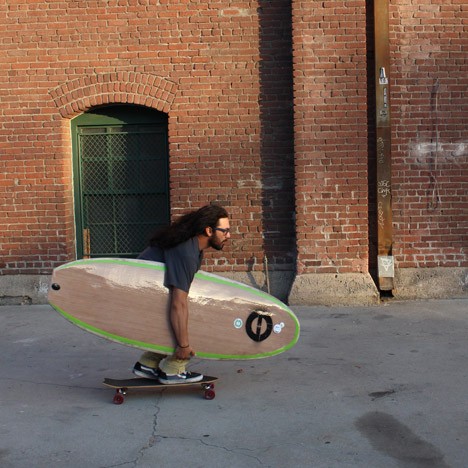
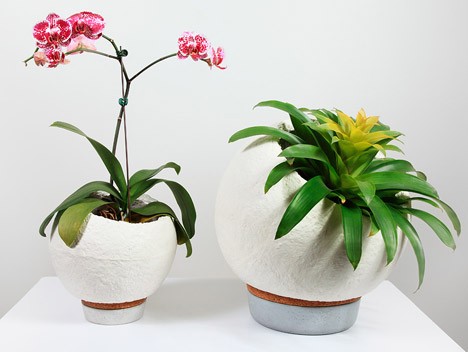
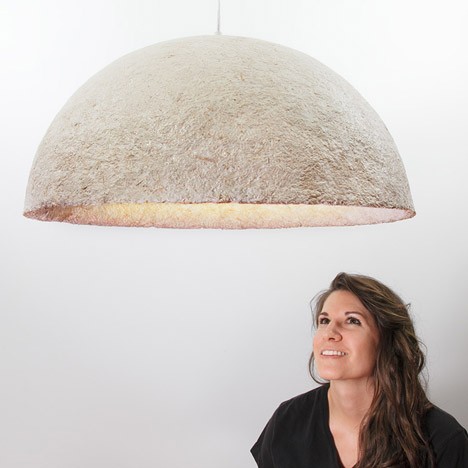
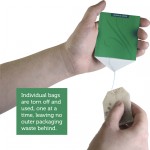
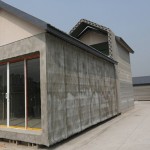
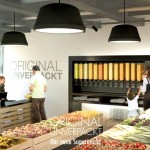




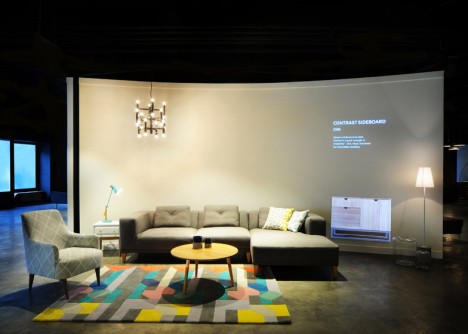

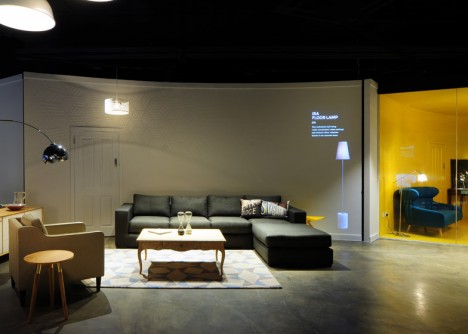
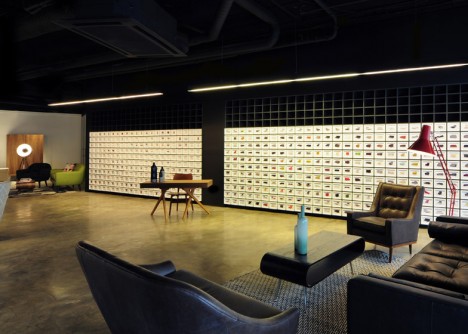

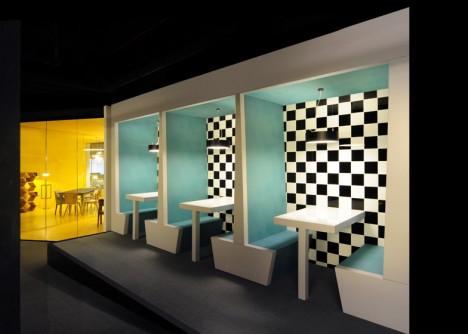
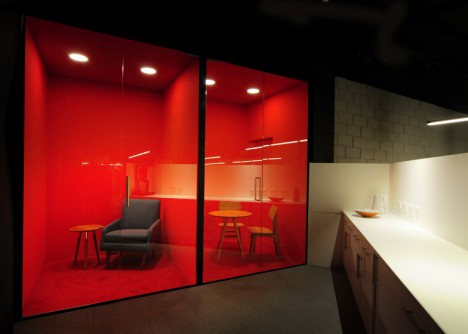

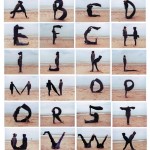
















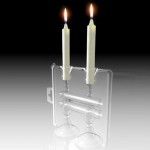
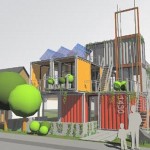
You must be logged in to post a comment.